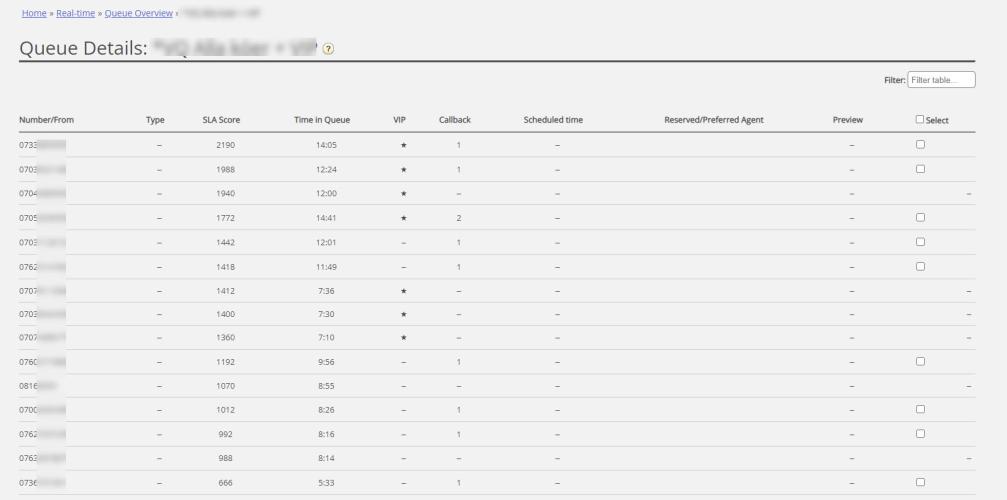About callback in queue
A customer calling in can be offered callback when he arrives in a queue and the estimated wait time now is longer than e.g. 3 minutes (or more than x callers are waiting). If the customer presses x to order callback and confirms, he/she will keep his position in this queue. When the customer is first in queue, an agent is called, and then the customer is called.
- If the call is answered by the customer or by voicemail, a new call will not be done.
- If the call is not answered by the customer or voicemail, the default is that no more calls will be done (1 callback attempt only).
- If 2 or 3 attempts is configured, a customer who doesn't answer is put at the end of the queue, and he will be called when he is first in queue.
- If 2 or 3 callback attempts is configured, a 'quarantine' (=time from an unanswered callback until the customer is put back into the queue (parameter name 'secBetweenRetries')) can be configured, e.g. 30 seconds. This quarantine is to prevent doing the 2nd callback a very short time after the 1st callback in the very special case none or very few callers are now waiting in the queue. If you only offer callback when the estimated wait time is quite long or there are lots of callers in queue, the wait time is probably still quite long after the 1st callback attempt is done, so a quarantine is usually not needed (or could be very short). If a quarantine is defined, a caller will not be shown on the Queue details page for the seconds the call is in quarantine.
For a customer waiting for the 2nd or 3rd callback attempt, we show the customer's gross wait time in Queue details, but when calculating the request's SLA score, we use the net wait time (= time since it was put back into queue after the previous callback attempt (and quarantine)).
The Queue details page is by default sorted on SLA Score, which means that a caller that has been given a high VIPscore (resulting in a high SLA score) might be shown high up in the list even if the call's wait time is short.
In general, we strongly recommend to answer all callbacks in queue each day before all agents log off.
A callback can stay in queue for max 72 hours, which means that if agents leave in the evening before all callbacks are done, the callbacks are still waiting in queue the next morning, unless the administrator has deleted them from the queue.
To put a callback into another queue than the queue the caller ordered callback from is possible, but not recommended. The main reasons are:
- The customer will not keep his place in queue. The customer is called when an agent (in a short or in a very long time) gets the call from this callback queue.
- What to announce to the caller when he orders callback?
- How to make sure agents get the callbacks within a reasonable time?
- Statistics, Ticker, Archive and Raw data will become confusing. 1 incoming call from the customer is reported as arriving in queue X where he interrupted (left the queue), and then 1 new incoming call to another queue, that ordered callback.

